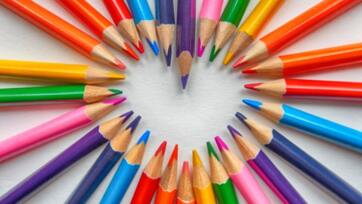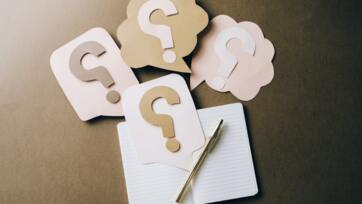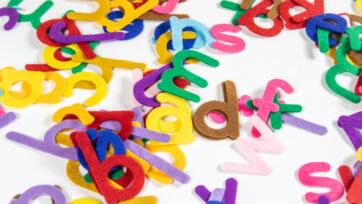Introduction
Early childhood education depends heavily on mastering the alphabet since it creates a foundation to learn reading, writing, and communicating effectively. Learning letter knowledge requires effective tools, which educators and parents actively search for in their young students. Young learners use the alphabet quiz as an active testing tool for letters through a playful format. Printable flashcards are highly popular learning tools that function equally well in classrooms and at home. The article explores the ultimate encounter with an alphabet quiz by offering step-by-step guidance to optimize printable flashcard effectiveness.

The Importance of Early Alphabet Recognition
Recognition of alphabet letters during early childhood remains crucial because it enhances how children learn to read and write. Reading fluency starts with children understanding letter recognition of the alphabet. The learning covers all combinations of uppercase and lowercase letter characters alongside their corresponding phonetic values. Children who learn to identify letters before other reading skills break the language code, which helps them understand how letters create words. Through flashcards, children get a dynamic way to discover these vital symbols in a visual format that also involves their senses. Visual flashcards create better opportunities for students to remember letters since they link sounds to letter symbols.
The Success Factors Behind Alphabet Flashcards Make Learning Powerful
The combination of visuals and experiences in Alphabet flashcards creates an effective learning situation, producing memory retention. Through flashcards, children see the letter on display, but the letter's sound is heard by themselves when pronouncing it or when instructed by an adult regarding its phonetic sound. Multiple senses involved in flashcard practice strengthen learning better than singular activities such as listening to songs or reading books. Words on flashcards enable numerous encounters with the intended information because repeated contact enhances memory. Using flashcards involves direct child participation, which maintains physical involvement and improves learning activity and memory retention.
How to Create the Perfect Alphabet Flashcards
Making alphabet flashcards at home remains straightforward and amusing for learners while they develop the cards. Every home already possesses the necessary components to create flashcards since you only need blank index cards or paper and markers alongside your imagination. Lie a letter from the alphabet on each card using clear and large font sizing. The visual appeal increases when you place appropriate pictures on the cards next to their corresponding letters.
The ABC flashcards bring learning enjoyment through their quiz activity format.
Utilizing alphabet flashcards in quiz format produces a proper evaluation method that maintains student engagement during the assessment process. When you use flashcards for learning, you can develop an identification quiz format where the child must name respectively the letter or sound on display. The game earns students points when their answers are right, and the score has time limits for answering. This teaching technique combines competitive aspects into fun learning and instant feedback opportunities for both participants involved in the session.
Incorporating Interactive Activities with Flashcards
Using flashcards is an effective tool for letter recognition; however, their impact improves if you integrate interactive learning activities. The child needs to sort flashcards by alphabetic order during this activity. The practice teaches students both recognition of letters and sequence understanding of the alphabetical order. Letter hunts provide children with a fun approach to learning by finding objects throughout the room or house which start with specific letters. Physical activities that maintain child interest and enhance letter knowledge delivery occur through interactive methods.
Flashcards for Letter Recognition and Writing Practice
Alphabet flashcards provide dual-purpose usage because they assist children in recognizing letters and practicing their writing skills. Once children become comfortable with each letter's appearance, using flashcards for practicing their letter-writing skills is safe. The process helps children keep the letter appearance in mind while building automatic skills through continuous writing practice. Flashcards should include traceable letters or dotted lines for children who need help developing adequate writing skills.
The content of Flashcards should adapt to meet the specific needs of distinct learning styles among students.
Children learn through different methods; thus, educational materials such as flashcards must be personalized according to individual learning needs and preferences. Visual learners benefit from flashcards that use lively colours with visual elements because they become more interesting to study. Kinesthetic learners will benefit from flashcard work when physical movements like letter hopping or beat-clapping are included as they speak letter sounds. Audio proficient students learn best when they can express sounds out loud while using musical melodies and rhymes to understand letter names.
The teacher should present students with uppercase alongside lowercase letter forms during the same instructional period.
Parents who instruct alphabet letters must overcome the challenge of teaching students to identify every letter's uppercase and lowercase forms. Flashcard designs that simultaneously display both letter formats make a powerful teaching tool. Children who view flashcards with uppercase and lowercase variations can understand the difference between various letter forms while learning about uppercase and lowercase. Lowercase letters are more useful for early readers in educational and real-life settings w, while letters appear in daily texts.
The Role of Repetition in Learning the Alphabet
Young children need repetition to learn their alphabet by memory. Flashcards are an effective tool for repeatedly presenting letters to children through their basic design. When children use flashcards to learn the letters and their sounds, it becomes a stronger opportunity for long-term memory retention. Repetition alone cannot drive successful learning since children require new activities to stay committed to their educational journey. The learning activity should change after several successful matching sessions when children know each letter and its picture to keep them engaged.
Making Alphabet Quizzes More Challenging
Operators must introduce progressively tough quiz tasks for children to master the alphabet. Add mixed-letter quizzes to your lessons since flashcards will be shuffled, making students identify random letters. After presenting the mixed alphabet format, the quiz should include uppercase and lowercase letter options. The quiz level should become more challenging through questions about word starting letters, followed by testing sound recognition of individual letters when children exhibit established proficiency.
Flashcards as a Tool for Group Learning
Group activities benefit from using flashcards, a productive educational tool for collective learning environments. Parents can use flashcards for team quizzes, which allows children to learn together as a group and solve problems collectively. The combined group work supports both social development and academic understanding. Educational staff should distribute students into teams to perform flashcard identification tasks with existing flashcards. Such group activities bring social elements that enhance learning opportunities.
The Benefits of Flashcard Games for Learning
Flashcards made into games deliver dual learning advantages with increased excitement for children. Educational flashcards produce a variety of gameplay, including bingo activities, memory comparison matches, and letter-tracking games. Children remain active throughout the activities because the games pull them into learning letters and sounds. Game competition creates excitement and enables children to enhance their abilities while staying motivated rather than experiencing learning as studying. The games offer simplicity of adjustment for different skill levels, enabling customized learning opportunities for each student.
How Flashcards Support Reading Comprehension
The main purpose of flashcards is to establish letter knowledge, but they serve as a supplementary tool for reading comprehension development. After mastering letter sounds and recognition, children start to grasp the process of letters uniting into words. Children develop better reading speed because their word decoding skills improve.
Conclusion
The educational use of printable alphabet flashcards represents a demonstrated strategy for promoting young children's literacy acquisition. These flashcards provide educational value in classroom settings and home activities because they enable students to learn letters and phonetic sounds and develop writing abilities. Children can maintain their attention during learning because alphabet flashcards transform educational material into interactive quizzes that help them acquire essential reading and writing competencies. Young readers experience engaging and successful education when parents or educators combine these flashcards with interactive learning techniques.








